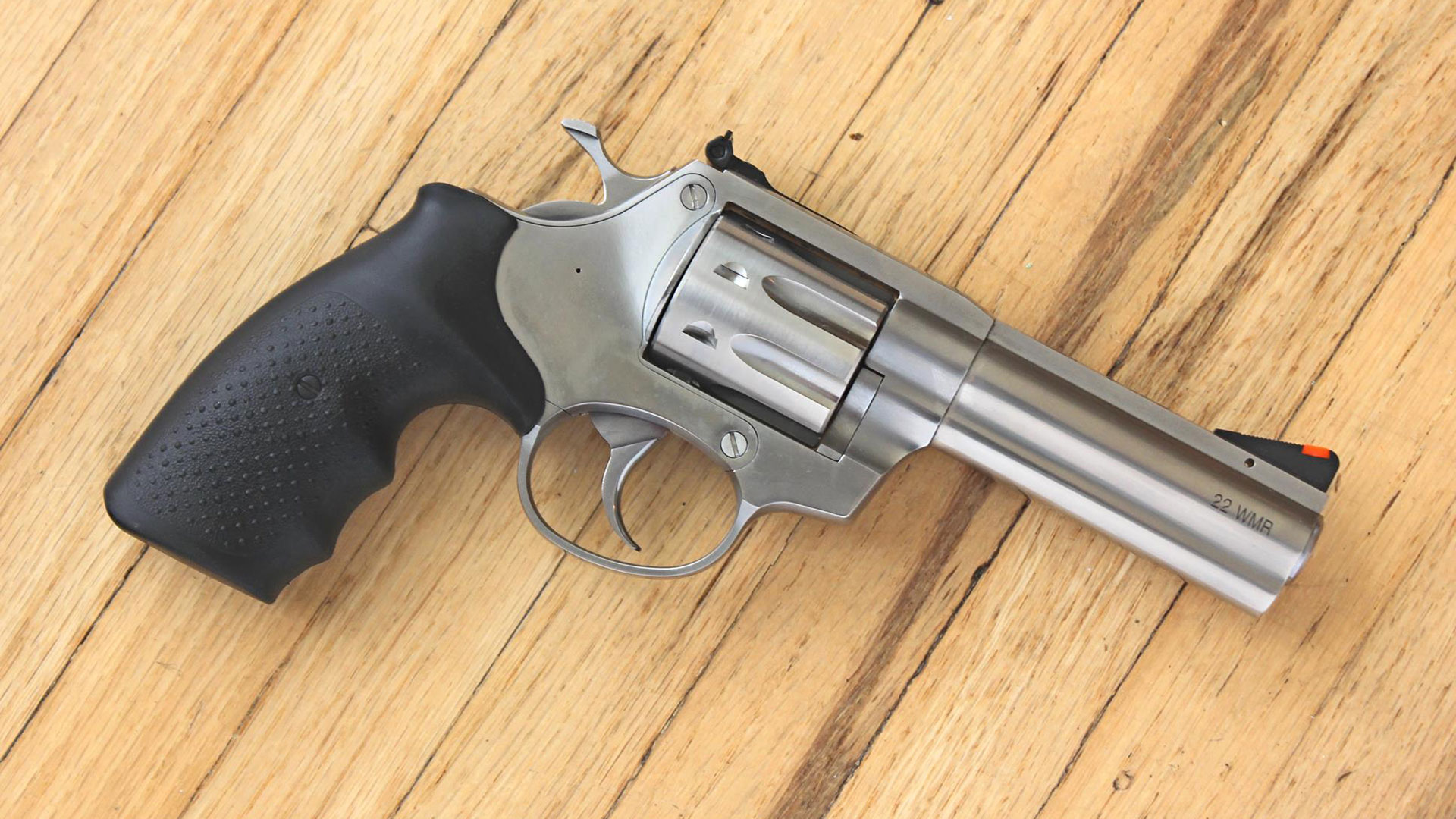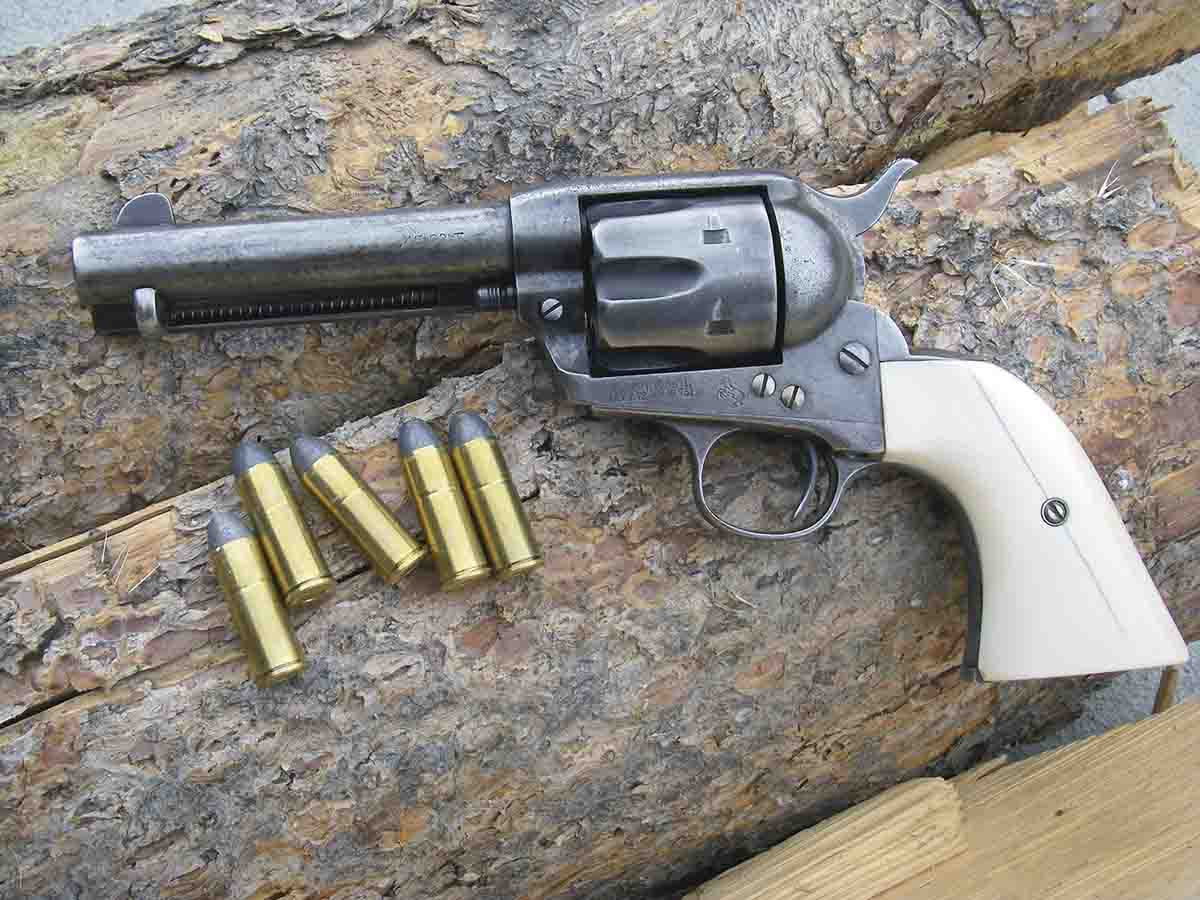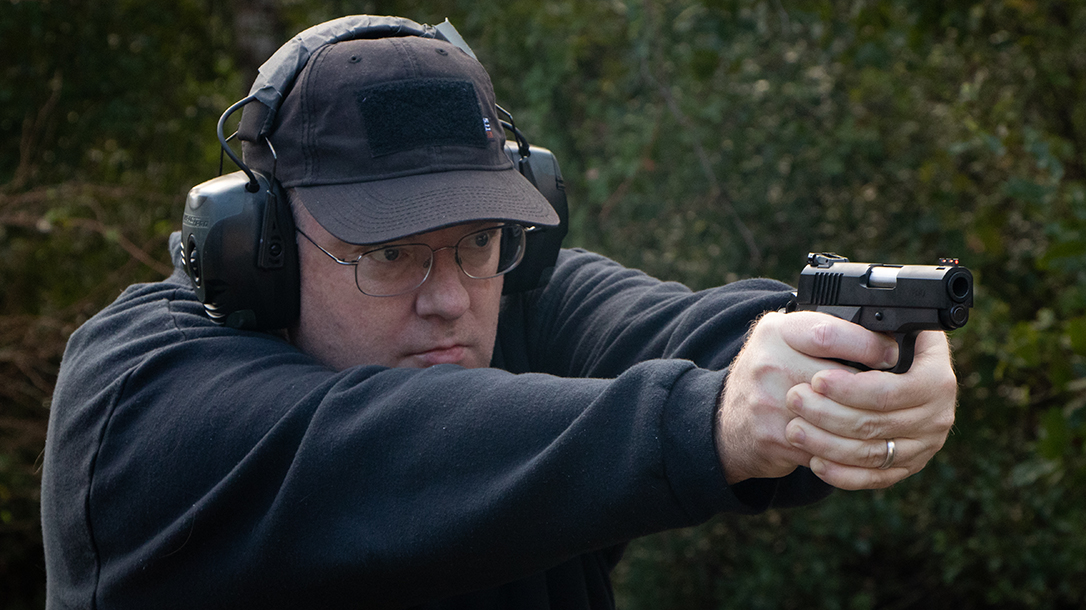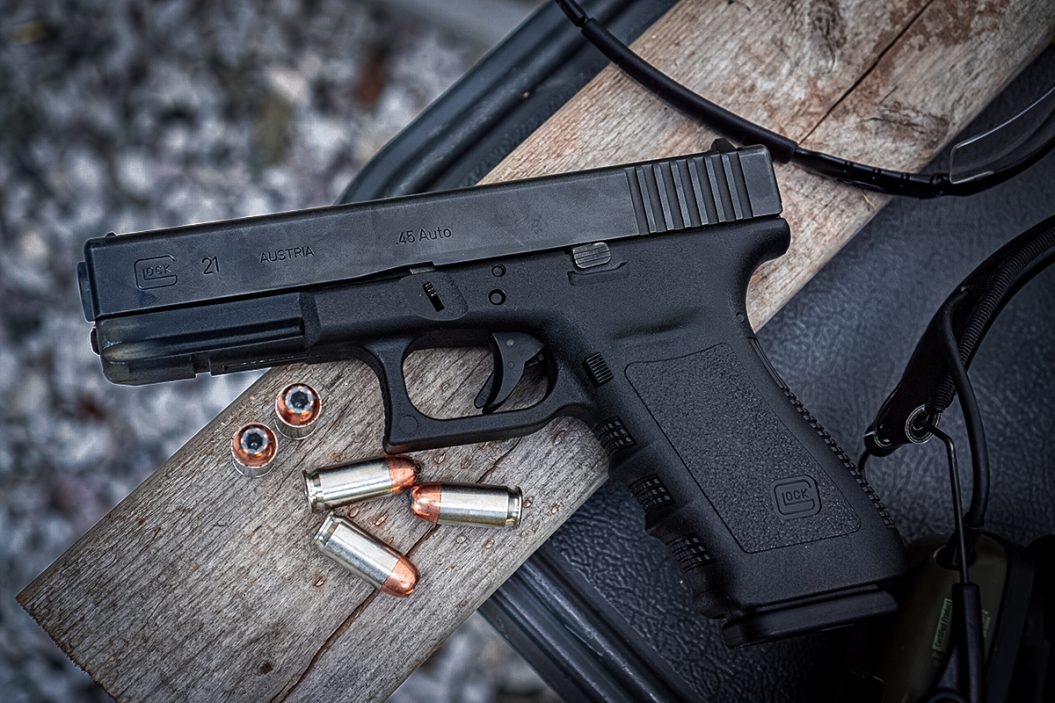Revolvers Vs. Pistols - Choosing The Right Firearm For You
Explore the timeless debate of revolvers vs. pistols in this in-depth comparison. Discover the unique features, advantages, and disadvantages of these iconic handguns to make an informed choice for your personal defense needs.
Author:Emily SanchezReviewer:Elisa MuellerFeb 12, 202454 Shares18.1K Views
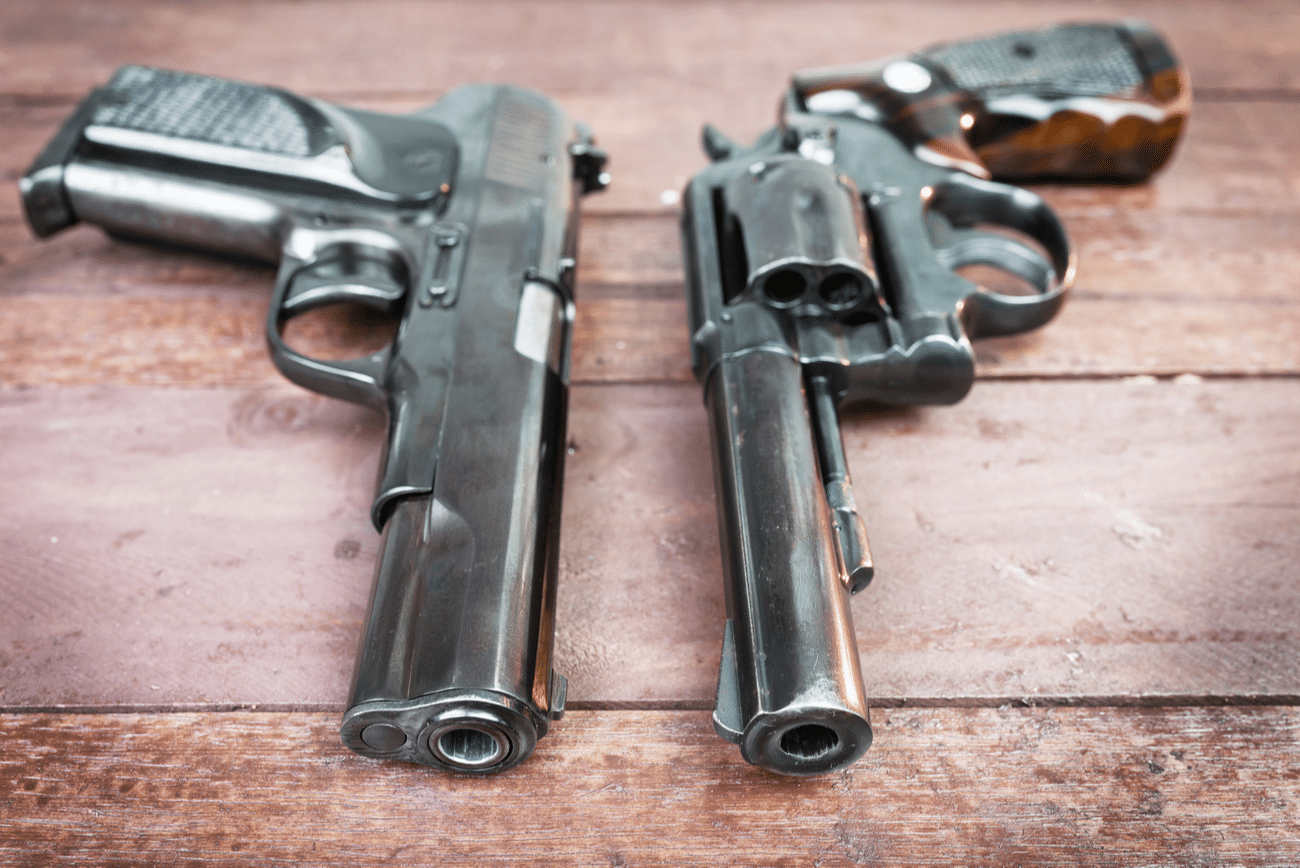
In the ever-evolving world of firearms, the choice between a revolvers vs. pistols is a decision that has perplexed and intrigued gun enthusiasts for generations. Both handguns have unique attributes, each catering to a specific set of preferences and needs.
Whether you are drawn to the timeless simplicity of a revolver or the modern versatility of a pistol, understanding the characteristics and nuances of each firearm is crucial for making an informed choice. In this exploration of revolvers vs. pistols, we will delve into the distinctive features, advantages, and disadvantages of these two iconic categories of handguns.
What Are Revolvers?
Revolvers, a category of handguns renowned for their classic design, feature a distinctive spinning cylinder with multiple rotating chambers. Positioned directly behind the barrel's breech end, the cylinder typically houses five or six chambers, each capable of storing a single round of ammunition.
The orchestrated rotation of the cylinder, initiated by either the cocking of the hammer or the pull of the trigger, aligns the subsequent cartridge with the barrel, contributing to the enduring appeal and reliability of these firearms.
Types Of Revolvers
There are three distinct action types when it comes to revolvers, each offering a unique shooting experience:
- Single-Action Only Revolver (SAO) - In the realm of single-action revolvers, the thumb of the firing or supporting hand takes center stage. The manual cocking of the hammer by the thumb initiates the rotation of the cylinder, aligning the subsequent round with the barrel. This action necessitates a second manual cocking of the hammer before firing, earning its classification as a single-action mechanism. The trigger, in this case, has a singular function - to release the hammer.
- Double Action/Single Action Revolver (DA/SA) - Enter the versatile realm of double-action/single-action revolvers, offering the shooter a dual mode of operation. In single-action mode, a deliberate cocking of the hammer precedes the trigger pull, resulting in a lighter and shorter action, enhancing accuracy. Conversely, in double-action mode, the trigger pull is heavier and longer, as it must compress the mainspring twice. This dynamic allows users to choose between firing modes based on preference and tactical requirements.
- Double Action Only Revolver (DAO) - Distinct in its design, the double-action-only revolver exclusively operates in double-action mode, lacking the option for single-action firing. Often featuring spurless or bobbed hammers, and at times fully enclosing the hammer within the revolver's frame, DAO designs prioritize simplicity and safety. With no option to lock the hammer back, these revolvers are fired solely in double-action mode, ensuring a consistent and reliable shooting experience.
How To Operate A Revolver?
Single-Action Only Revolver (SAO)
Navigating a single-action-only revolver, exemplified by iconic models like the Colt Single Action Army, demands a deliberate and manual approach. The trigger in these revolvers serves a singular purpose - releasing the hammer. To ready the firearm for firing, the shooter manually cocks the hammer with the thumb, indexing the cylinder.
The reloading process involves a meticulous sequence: unloading the cylinder manually with the hammer at half-cock, rotating the cylinder by hand to align each chamber with the ejector rod, and unloading cartridges one by one.
Double Action/Single Action Revolver (DA/SA)
A double-action/single-action revolver, commonly known as a double-action revolver, provides a dynamic dual-mode operation. Firing options include single action by manually cocking the hammer or double action by engaging the trigger.
In double-action mode, the trigger pull is intentionally longer and heavier, as it performs the dual tasks of cocking and releasing the hammer. Alternatively, the single-action mode offers a shorter, lighter trigger pull, enabling more precise shots for the discerning shooter.
Double Action Only Revolver (DAO)
Enter the realm of double-action-only revolvers, or simply "dual-action revolvers," where single-action operation is not an option. The hammer may be shrouded or concealed within the frame, reducing the risk of snagging on clothing during concealed carry.
Commonly found in snub-nosed revolvers designed for discreet self-defense, DAO revolvers prioritize simplicity and safety, offering a consistent double-action firing experience without the option for single-action use. Understanding the nuances of each action type ensures efficient and effective operation based on your revolver's design.
Advantages Of Revolvers
Choosing a revolver over a semi-auto pistol offers a unique set of advantages that cater to both novice shooters and seasoned enthusiasts. Caleb Giddings highlights a U-shaped utility curve for revolvers, making them suitable for beginners uninterested in extensive training and expert shooters seeking lightweight concealability.
Power
The sturdiness of a revolver's design allows it to be chambered for potent cartridges, enhancing its appeal for self-defense purposes. While .357 Magnum and .44 Magnum are formidable options, some revolvers can handle even more powerful rounds like .454 Casull and .500 S&W Magnum, making them practical for hunting and bear defense. Popular choices for self-defense, however, include the more manageable .38 Special and .357 Magnum.
Reliability
With minimal moving parts, revolvers stand out for their inherent reliability. The simplicity of their design reduces the likelihood of malfunctions during critical self-defense scenarios. Additionally, when faced with a dud round, a simple trigger pull aligns the next round with the barrel, especially in double-action models, further ensuring operational dependability.
Note- While a revolver's reliability is advantageous for extended periods of inactivity, modern pistols with proper maintenance and suitable ammunition are also highly dependable.
Accessibility
Learning to use a pistol is manageable, but mastering a revolver's operation is even more straightforward. Once users understand how to swing out the cylinder, the remaining steps involve locating the trigger - a process simplified compared to mastering the intricacies of a semi-auto pistol. This accessibility factor makes revolvers an excellent choice for those new to firearms, requiring minimal training to grasp the basics.
Safety
Revolvers inherently offer a higher degree of safety, as they are more difficult to negligently discharge. This quality makes them an ideal choice for beginners or individuals who may not undergo extensive training. The straightforward mechanics contribute to a reduced risk of accidental discharges, fostering a safer learning environment for those new to the world of firearms.
What Are Pistols?
A semi-automatic or self-loading pistol, commonly known as a "pistol," represents a pinnacle in handheld firearms design. It is characterized by a single-barreled construction and is fed from either an integral or detachable magazine.
The critical distinction between revolvers and pistols lies in the loading mechanism: pistols feature fixed chambers, diverging from the rotating chambers found in revolvers. In the intricate mechanics of a pistol, a reciprocating slide assumes the role of the bolt, effectively sealing the breech upon ignition.
Unlike their revolver counterparts, pistols leverage the bolt thrust or gas pressure generated by the fired cartridge to orchestrate the cycle of operation. This sophisticated process involves the automatic ejection of the spent cartridge case, the chambering of a fresh round from the magazine, and the resetting of the firing mechanism, all seamlessly executed by the reciprocating slide.
Types Of Pistols
The diverse world of pistols encompasses various types tailored to distinct preferences and applications:
Single Shot Pistols
Exemplifying simplicity, single-shot pistols allow for the discharge of a single round before requiring manual reloading. The straightforward operation involves firing one round, manually reloading, and preparing the pistol for the next shot, making it an uncomplicated yet deliberate choice.
Multi-Barreled Pistols
A step beyond single-shot pistols, multi-barreled pistols provide an incremental advancement by enabling the shooter to fire multiple rounds consecutively without the need for immediate reloading. This design offers a more streamlined shooting experience, enhancing efficiency in scenarios where rapid successive shots are essential.
Semi-Auto Pistols Or Semi Auto
Ubiquitous in the realms of law enforcement, the military, and civilian use, semi-automatic pistols (often referred to as semi-auto handguns) represent the epitome of modern handgun design.
Magazine-fed and highly favored for their versatility, these pistols empower the shooter to fire multiple rounds in succession without manual intervention. Widely embraced for their ease of use and rapid-fire capabilities, semi-auto pistols have become the standard choice for those seeking a reliable and efficient firearm.
How To Operate A Pistol?
Operating a semi-automatic pistol involves understanding its trigger mechanisms, which may employ either a hammer or striker mechanism for primer ignition, distinguishing it from the hammer-centric operation of revolvers.
The foundation of a semi-automatic pistol's functionality lies in the magazine, as defined by the Small Arms and Ammunition Manufacturers’ Institute (SAAMI). A detachable box magazine, typically holding cartridges in a single or double feeding column, is the standard feeding mechanism for these pistols. Manufacturers strategically stagger the feeding column to increase capacity while minimizing length, optimizing the balance between firepower and manageability.
In contrast, the concept of clips, specifically "stripper clips," facilitates rapid cartridge insertion into magazines, acting as a crucial link in the feeding process. It's essential to note that clips lack feeding springs and are seldom used in semi-automatic pistols. However, their historical significance is underscored by their role in reloading rifles and rifle magazines for over a century.
While semi-automatic pistols predominantly utilize box magazines, revolvers can leverage half and full-moon clips. These innovative devices function similarly to speedloaders, allowing the simultaneous insertion of three or six cartridges. Particularly useful for rimless cartridges like 9mm or .45 ACP, the moon clip acts as a surrogate revolver rim, facilitating the extractor star's engagement and securing a swift reload.
Advantages Of Pistols
Semi-automatic pistols offer a range of advantages that cater to the practical needs of shooters, from increased ammo capacity to efficient reloading processes.
Ammo Capacity
A significant advantage of semi-auto pistols lies in their impressive ammunition capacity. In contrast to the limited rounds typically held by a revolver's cylinder, semi-auto magazines can accommodate a higher volume of ammunition. For instance, the Glock 17's standard magazine boasts a capacity of 17 rounds of 9mm ammo, providing users with a substantial firepower advantage.
The option to use extended magazines, such as a 100-round magazine for the Glock 17, further ensures that shooters are well-equipped to handle any potential threat without compromising on ammunition supply.
Reloading
Efficiency in reloading is a notable strength of semi-automatic pistols. While revolvers require the use of moon clips or speedloaders for a rapid reload, pistols streamline the process. With a semi-auto, reloading involves ejecting the empty magazine, inserting a full magazine, racking the slide, and being ready to fire.
This swift and straightforward reloading sequence is particularly advantageous in situations where speed is essential, providing a tactical edge over the slower reload process of a revolver.
Note- The transition of law enforcement to semi-automatic pistols was, in part, driven by the need to match criminals' increasing firepower, emphasizing the practical advantages of efficient reloading in dynamic scenarios.
How To Choose Between Revolvers Vs. Pistols?
Choosing between revolvers and semi-automatic pistols is a personal decision influenced by various factors, requiring careful consideration of your preferences, experience level, intended use, and budget.
Personal Preference And Experience Level
Consider your comfort level and familiarity with firearms. New shooters might find the simplicity of a revolver appealing, given its fewer moving parts and straightforward manual of arms.
Conversely, experienced shooters may be drawn to the higher capacity and faster reload times offered by semi-automatic pistols. Your individual preferences and confidence in handling each type of firearm should guide this crucial decision.
Intended Use
The purpose for which you need the firearm is a pivotal factor. If you're seeking a concealed carry option, the slim and sleek design of most semi-automatic pistols may be preferable.
On the other hand, for reliable home defense, the simplicity and inherent reliability of a revolver might be more advantageous. Clearly defining your intended use will help align the firearm's features with your specific needs.
Budget
Financial considerations play a crucial role in the decision-making process. While pricing varies among both revolvers and semi-automatic pistols, the best firearm for you is one that fits your budget and aligns with your comfort level.
It's essential to factor in the cost of ammunition, holsters, and any necessary modifications or accessories. A well-rounded decision encompasses not only the initial firearm purchase but also the overall cost of ownership.
Frequently Asked Questions
Are Revolvers Or Pistols More Accurate?
Accuracy depends on various factors, including the shooter's skill and familiarity. Generally, both revolvers and pistols can achieve high accuracy with proper training.
Do Revolvers Jam Less Than Pistols?
Revolvers are less prone to jamming due to their simpler design with fewer moving parts. However, modern pistols are highly reliable with proper maintenance and quality ammunition.
Can Revolvers Shoot Semi-auto Pistol Rounds?
Revolvers are designed for specific ammunition types. While some revolvers can shoot certain semi-auto pistol rounds, compatibility varies, and it's crucial to use ammunition suitable for the firearm.
Which Is Better For Concealed Carry, Revolvers, Or Pistols?
Both revolvers and pistols have concealed carry options. Pistols often offer higher capacity and slimmer profiles, making them popular, but some prefer the simplicity of revolvers for concealed carry.
Are Revolvers More Suitable For Beginners?
Revolvers are often recommended for beginners due to their simple manual of arms and reliability. However, with proper training, many beginners also find semi-automatic pistols accessible and user-friendly.
Conclusion - Revolvers Vs. Pistols
As the smoke clears from the ongoing debate between revolvers and pistols, it becomes evident that the choice between these two firearms is deeply personal and dependent on individual preferences. The classic allure of a revolver with its robust reliability and stopping power stands in contrast to the modern adaptability and customization options offered by pistols. Ultimately, the decision rests on factors such as purpose, comfort, and desired features.
Whether you find solace in the nostalgic simplicity of a six-shooter or are drawn to the sleek efficiency of a semi-automatic, both revolvers, and pistols have earned their places in the annals of firearm history. The key lies in choosing the one that aligns with your needs, providing not only a sense of security but also a connection to the rich heritage of firearms that have safeguarded lives for centuries.

Emily Sanchez
Author
Emily Sanchez, a Fashion Journalist who graduated from New York University, brings over a decade of experience to her writing. Her articles delve into fashion trends, celebrity culture, and the fascinating world of numerology.
Emily's unique perspective and deep industry knowledge make her a trusted voice in fashion journalism.
Outside of her work, she enjoys photography, attending live music events, and practicing yoga for relaxation.

Elisa Mueller
Reviewer
Elisa Mueller, a Kansas City native, grew up surrounded by the wonders of books and movies, inspired by her parents' passion for education and film.
She earned bachelor's degrees in English and Journalism from the University of Kansas before moving to New York City, where she spent a decade at Entertainment Weekly, visiting film sets worldwide.
With over 8 years in the entertainment industry, Elisa is a seasoned journalist and media analyst, holding a degree in Journalism from NYU. Her insightful critiques have been featured in prestigious publications, cementing her reputation for accuracy and depth.
Outside of work, she enjoys attending film festivals, painting, writing fiction, and studying numerology.
Latest Articles
Popular Articles
